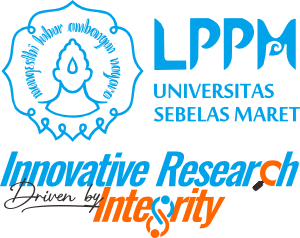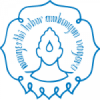Keyword: traditional building character, community based tourism
By: Wiwik Setyaningsih
The purpose of this research is to find out the characteristic of local value in Kauman areas throught the community based tourism to increase the tourism destination. The local value in Kauman areas identify with the old building as a Ulama/Ketib houses. There are one of the artifact building with the high history of Surakarta Palace which is very extra ordinary and completely. Kauman as an settlement be inseparable with Surakarta Palace where are the Ulama/Ketib living. The research employed qualitative approach and descriptive methods. Data collection techniques consisted of site observation, interview and secondary data study. Continued with identifying the object by connecting it with reference, so that the local value in Kauman areas of model the rural tourism development by community based tourism is found.
Research results indicate that the existing of the Ulama/Ketib houses character in Kauman which was built in 1800-1900 M, and shows a Javanese traditional building with the background of views and Javanese palace culture. Ketib is an ulama abdi dalem choosing by the King of Surakarta Palace receiving a bangsawan title with the main duty to be responsible organizing the speaker of Friday spray in Agung Mosque, beside the Penghulu assistant in Surakarta Palace. The local value of Ulama houses, have some variable and has double functions, which is different to other houses. There is a building to live in, langgar to pray also home industry to help economically. Ulama houses of local value shows a Javanese traditional building with the background of Islam tacking point and Javanese Palace cultures which have the potentials to be developed as community based tourism. It is a symbol from the behavior of the people who live in it from the religion s aspects historically traditionally and socio–culturally as a saint building. The majority of Kauman community are of Islam religion whit the mosque as the center of orientation and activity for the community of Kauman people, and langgar as the center of orientation for the local community.
On the other hand, the owner has high appreciation to reserve the culture of the elderly by maintaining and looking after it. Eventhought there are economic needs that becomes bigger in connection to the social and economic mobility of the owner from time to time. The existing shows that some of Ketib houses have not yet maintenanced and installed sustainably. The reality some of them which have changed not only form, facade but also interior design.
Furthermore, seen tendency that some of the old building, include the Ulama/Ketib house have changed to be come commercial function as a batik exibition, although there is as a home stay and restaurant. Beside that, even still seen some Islam book shop/Al Qur’an and spray equipment service/ibadah which still develop and exist. The conclusion that Ketib house has double functions, those are Habluminnallah and Habluminnanas, apart from a house to live in, it is to pray and to do business economic practices. Therefore, it is essential to develop the tourism destination by community based tourim (Religi/Pilgrim Tourism;Culture/ Heritage Tourism and Home Industry/ Batik Tourism).

